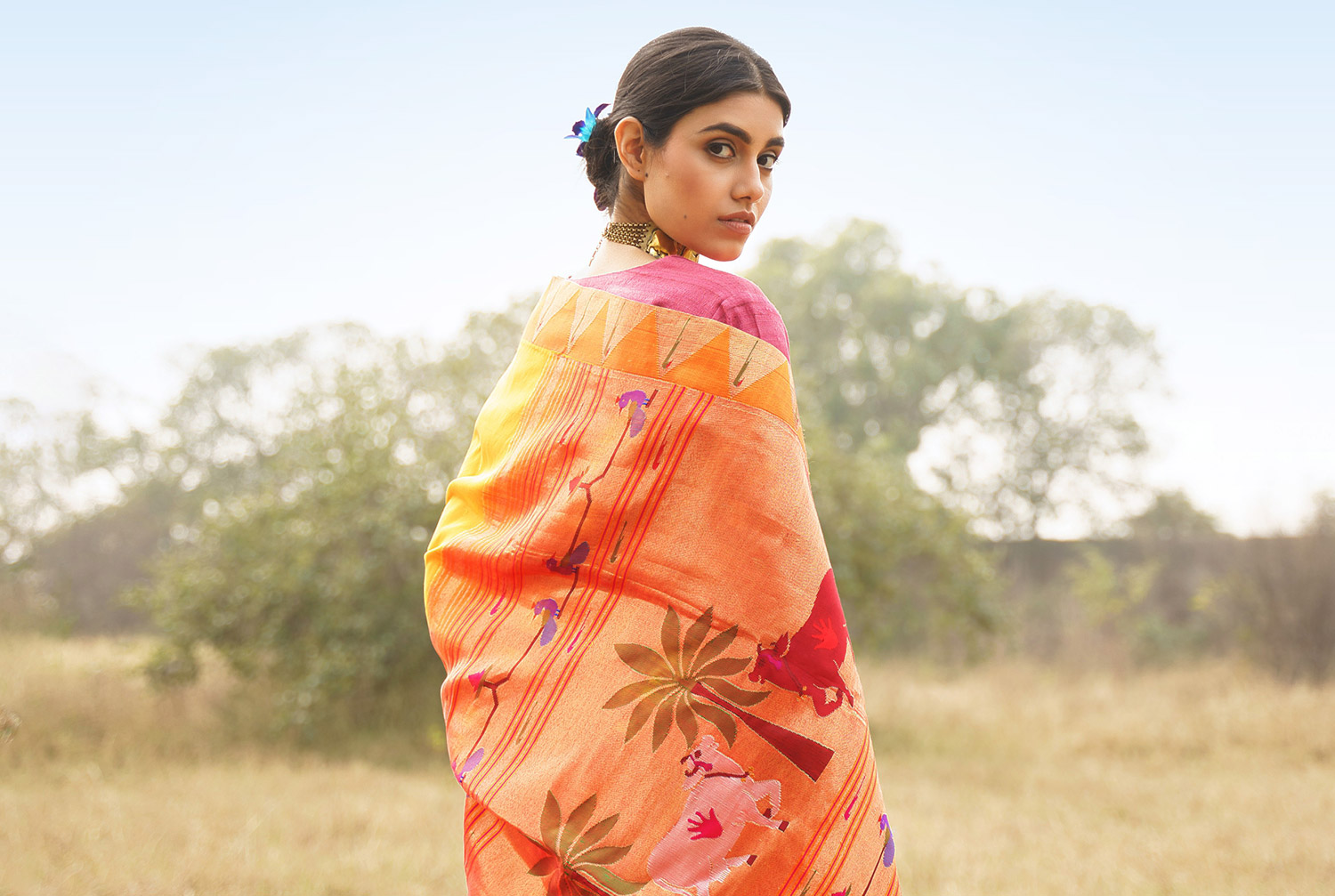

We have celebrated our brand, Label Pratham as a heritage brand that takes pride in the country's unparalleled diversity. Through our journey in the world of textiles and Indian craft for more than a decade, we have discovered and interacted with various handloom traditions and textile heritages of the country. In all these journeys, what appeared common was the deep relevance textiles still held in our living traditions - marriages, rituals, pujas, and other such ceremonies were incomplete without adorning traditional textile that communicates unwritten messages and codes of conduct of a particular community. It is a precious, intimate relationship people share with their regional handloom and textiles; nearly sacred, and an undeniably strong attachment with one’s identity amidst the bustling diversity of our country. Textiles become a way of standing out from the crowd, silently announcing where one comes from and belong to, and by studying the cross-cultural intermixing of cloths we can decipher the rich history of our land,
In Label Pratham’s studio, we have forever been committed to an aesthetic of rootedness that takes into account these unique weaving traditions of every region. We have spent innumerable moments with weavers and craftspeople, in weaving clusters and the humble huts of the weaver, exploring textiles and soaking in the stories behind them. It becomes an important matter of reckoning while working in this area that textile traditions are, most importantly, mnemonic ones - relying on the power of memory, reiterations, and creating designs in retrospect, signifying the role lineage plays in this sector. Once we brought segments of these traditions into our studio, we were now carriers of memory as well - elongating the lineage, lending our own skills and interpretations of the art form, while staying close to the roots. It was such an engagement that created the beautiful idiom of the Pichwai Paithani. Paithani originates in the state of Maharashtra and has been part of the people’s heirloom textile legacy for ages. Like so many other craft traditions, Paithani is passed down from mother to daughter at the time of marriage in the form of heirloom. The intricacy of its motifs overwhelmed us, and so did its bright colour palette. In this, it was similar to the Pichwai art tradition which relied heavily on detailed patterns and vivid colours. In one way, Pichwai from our studio had finally met its brethren - the gorgeous Paithani, regale in its presence, dignified beyond measure.
It is said that the Paithani weave has traversed through the lanes of history since the 2nd century BC. Intricately woven with silk, and gold and silver zari, it is ornate in nature and proudly so. The Paithani sari dates back to antiquity and originates in the royal palaces of Paithan, near Aurangabad. The designs and motifs of birds, flowers and creepers are largely inspired by nature, giving the textile a sense of wholesomeness. Another important characteristic of this saree or weave is that it uses gold and silver zari in luxurious amount.
In our studio, it was reborn under the umbrella of Pichwai art and aesthetic. Pichwai Paithani is Label Pratham's proud amalgamation of tradition with renovation, time and space, royalty and religion. Working on this fusion piece of creation was a creatively fulfilling challenge that required a stretch of the imagination, and the capacity to bring together the two craft forms without losing the unique characteristics of either. Pichwai in its core is a celebration of Lord Krsna through the ample natural bounty of Gokul, the nearby jungles rich with biodiversity, and the mellifluous sound of the streams harnessing moments of poetry, music and romance. Pichwai evokes all of these sentiments and more. In a serendipitous manner, the sinuous nature of Pichwai art, its celebration of the forms of nature, blended like a dream with the from the flora and foliage of Paithani, all coming together in form and finesse.
In the last many years, we have tried our best to mould the studio as a site of creative aspirations of contemporary artists and their engagement with these old-world traditions of art and craft. The Pichwai innovations we have been able to do has been a result of allowing free flight to the artistic imagination, while staying rooted to the essence of the craft. It is indeed a cognizant blend of both that truly creates new idioms and allows for our senses to be indulged, whether in the form of a saree or a canvas. We have taken immense delight in this journey of merging tradition with contemporaneity, playfulness with austerity, and Rasa with Dhvani; and look forward to many such discoveries.
